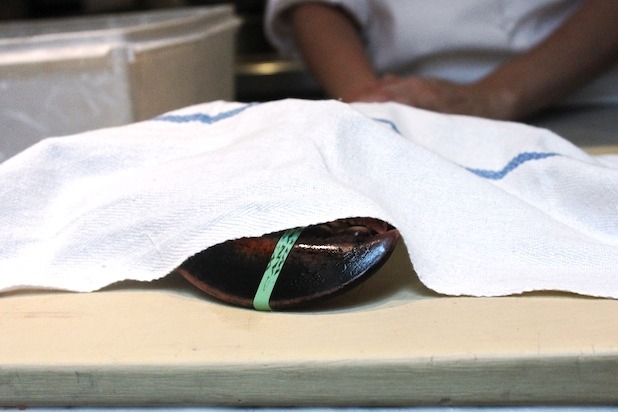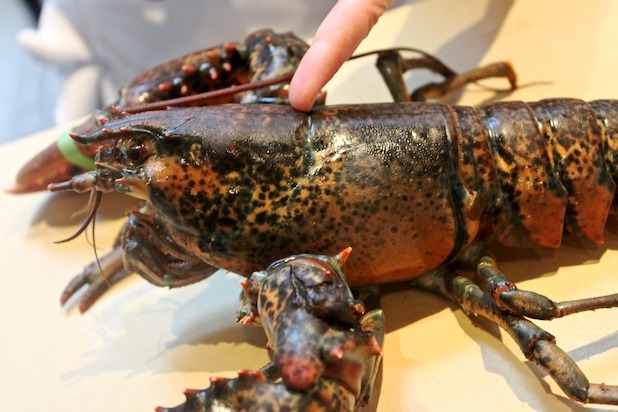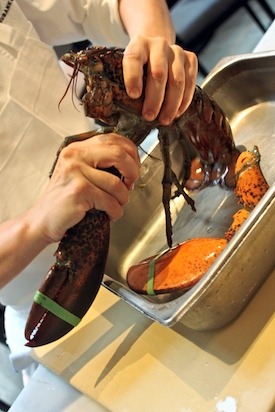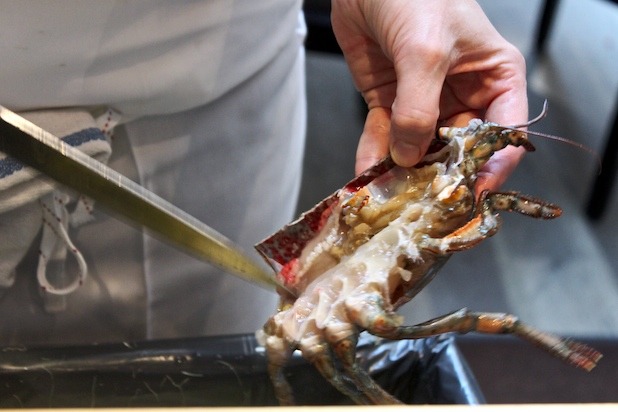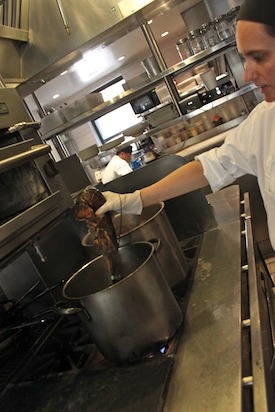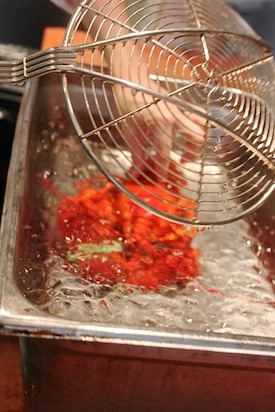How To Best Kill A Lobster Slideshow
Chef Amy Eubanks says that the first step is to make sure the lobster is alive. You can do this by turning it over and making sure that it moves a little in the claws and/or tail. Otherwise, it is dead and has probably started to decompose. (If you did cook it, the meat inside would be mushy and shriveled.)
Calming it Down
If the lobster is really lively, then you can throw a dishtowel over it for a couple of minutes to calm them down and take some of the stress away. While others recommend putting it in the freezer before cooking or putting a lobster in hot water to desensitize it, Eubanks recommends covering them with a towel or just doing it right away.
Where to Insert the Knife
Eubanks prefers the knife method to boiling because she explains it as, "I always think, I'd rather be killed with a knife through the head than boiled alive. I know it's not scientific, but... "
If you do choose this method, she says to first, make sure that the claws are out of the way and not moving around, otherwise you'll have to stop halfway.
Using a somewhat beat-up knife because this will damage the blade, find the first striation, and insert the knife one inch above it (where her finger is pointing in the photo).
Inserting the Knife
Hold the lobster down with a towel on a cutting board, making sure that you have leverage so you can come down hard and fast, hold the knife with the blade sticking out and insert it straight in and then bring it down, so the blade is parallel to the cutting board. (The motion is kind of like a lever.)
She warns that, though it's dead, the nerves will continue to make it move around, so don't be frightened if the legs and claws are still moving. By inserting the knife into the brain and then pulling it down, you are severing the brain and killing it quickly. The first time is the hardest, she says, but you will get used to it. There will be a fair amount of liquid that seeps out, so be prepared for that too.
Breaking it Up
To break apart the body, twist off the claws at the base of the knuckles, where it meets the body (as shown). Then remove the tail by twisting it off at the base end of the body. Now, you can either boil the lobster, making sure to cook the tails for 2 minutes less than the claws, or par-cook the meat to then poach it, put it in a sauce, or grill it.
Using the Body and Cooking it
Eubanks sometimes uses the body for stock if she's cooking the parts separately. To do this, she cuts the body in half, then cleans out the insides (as shown). She recommends putting on gloves to do this because it can get messy. It's also important to scrape out the lungs because they will make the stock bitter. You can also take a rolling pin and squeeze out the meat in the legs to add to the stock or a sauce.
Boiling the Lobster
Get a pot of water boiling, and then place the lobster in head first, making sure the water stays at a rapid boil the whole time. (It will turn red almost immediately.) Meanwhile, prepare an ice bath.
Placing it in an Ice Bath
Remove the lobster and place it immediately in an ice bath for about five minutes to stop the cooking process. You can always steam the lobsters quickly to reheat them if you are preparing them ahead of time. Or, if you are going to eat them right away, then skip the ice bath and serve hot with some melted butter and corn on the cob.

